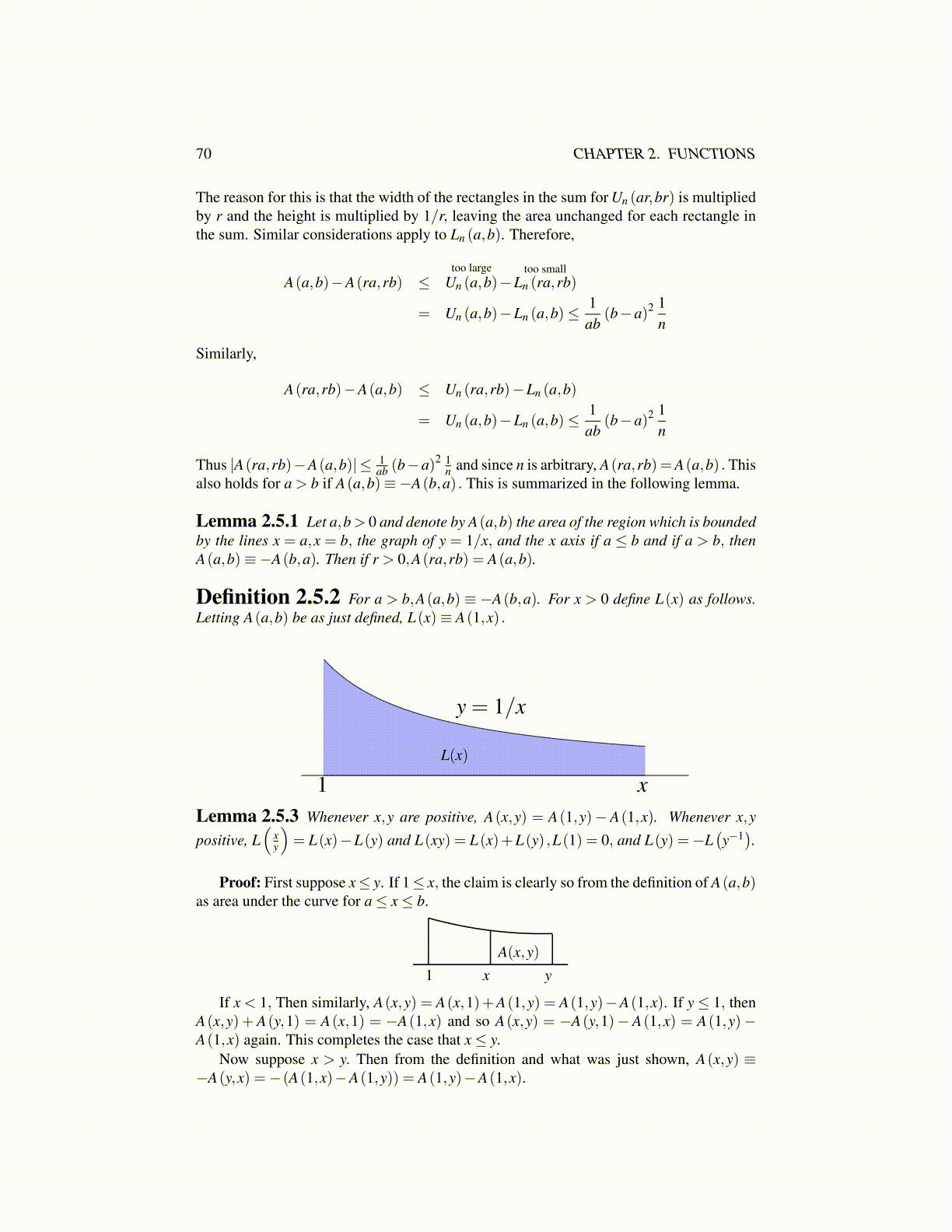
70 CHAPTER 2. FUNCTIONS
The reason for this is that the width of the rectangles in the sum for Un (ar,br) is multipliedby r and the height is multiplied by 1/r, leaving the area unchanged for each rectangle inthe sum. Similar considerations apply to Ln (a,b). Therefore,
A(a,b)−A(ra,rb) ≤too large
Un (a,b)−too small
Ln (ra,rb)
= Un (a,b)−Ln (a,b)≤1ab
(b−a)2 1n
Similarly,
A(ra,rb)−A(a,b) ≤ Un (ra,rb)−Ln (a,b)
= Un (a,b)−Ln (a,b)≤1ab
(b−a)2 1n
Thus |A(ra,rb)−A(a,b)| ≤ 1ab (b−a)2 1
n and since n is arbitrary, A(ra,rb)=A(a,b) . Thisalso holds for a > b if A(a,b)≡−A(b,a) . This is summarized in the following lemma.
Lemma 2.5.1 Let a,b> 0 and denote by A(a,b) the area of the region which is boundedby the lines x = a,x = b, the graph of y = 1/x, and the x axis if a ≤ b and if a > b, thenA(a,b)≡−A(b,a). Then if r > 0,A(ra,rb) = A(a,b).
Definition 2.5.2 For a > b,A(a,b) ≡ −A(b,a). For x > 0 define L(x) as follows.Letting A(a,b) be as just defined, L(x)≡ A(1,x) .
x1
y = 1/x
L(x)
Lemma 2.5.3 Whenever x,y are positive, A(x,y) = A(1,y)− A(1,x). Whenever x,y
positive, L(
xy
)= L(x)−L(y) and L(xy) = L(x)+L(y) ,L(1) = 0, and L(y) =−L
(y−1).
Proof: First suppose x≤ y. If 1≤ x, the claim is clearly so from the definition of A(a,b)as area under the curve for a ≤ x ≤ b.
1 x y
A(x,y)
If x < 1, Then similarly, A(x,y) = A(x,1)+A(1,y) = A(1,y)−A(1,x). If y ≤ 1, thenA(x,y) + A(y,1) = A(x,1) = −A(1,x) and so A(x,y) = −A(y,1)− A(1,x) = A(1,y)−A(1,x) again. This completes the case that x ≤ y.
Now suppose x > y. Then from the definition and what was just shown, A(x,y) ≡−A(y,x) =−(A(1,x)−A(1,y)) = A(1,y)−A(1,x).